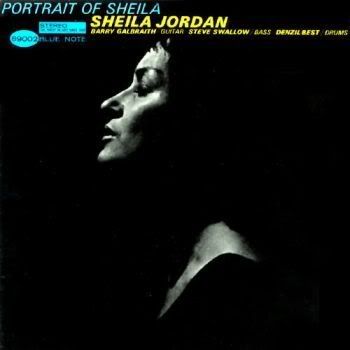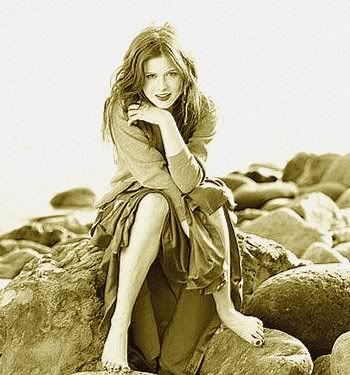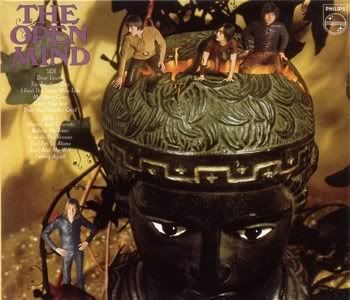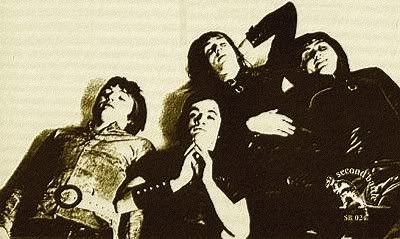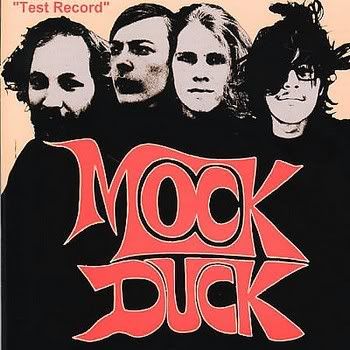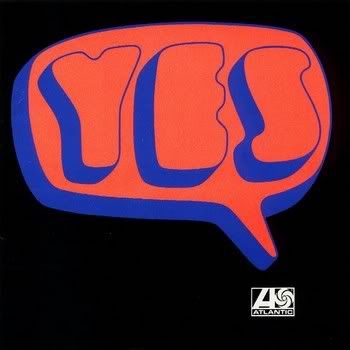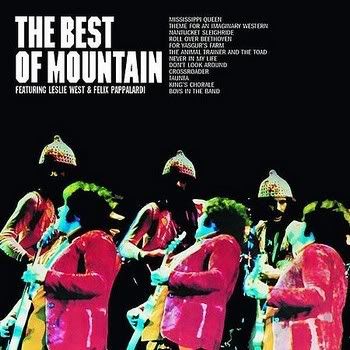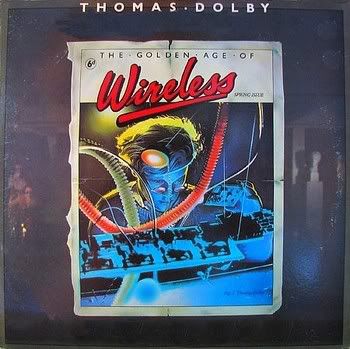
Paul Rodgers - Electric - 1999 - SPV
Paul Rodgers is one of rock's greatest singer/songwriters. It is sometimes forgotten that he is also a brilliant instrumentalist. He has been performing now for over forty years. As well as being the main man of mega rock groups like Free, Bad Company, and the Firm, Paul has performed with many of today's rock, jazz and blues legends, (too numerous to mention here), and his phenomenal voice is in constant demand by musicians. Rodgers has never failed to add a touch of class to hundreds of recordings. Rodgers is known as "The Voice," in the music business, but Abdul "Duke" Fakir of The Four Tops, of whom Rodgers is a great admirer, may have been more accurate when he said that Paul Rodgers is "the soul of rock." On this album, Paul Rodgers does what he does best. Ten great tracks of no frills, straightforward blues rock. There is nothing too commercial or over the top here, and there doesn't need to be. Paul Rodgers has never sold out to commercialism. He sings today what he sang thirty or forty years ago, and his talent speaks for itself. Rodgers also produced and mixed this album. Buy his magnificent 1994 "Muddy Water Blues" album, on which he is joined by guitarists, Brian May, David Gilmour, Jeff Beck, Steve Miller, Buddy Guy, and Ritchie Sambora. How about that for a line-up!
TRACKS
Deep Blue (2:33)
Walking Tall (3:34)
Find a Way (5:37)
China Blue (3:01)
Love Rains (3:18)
Over You (6:29)
Drifters (4:19)
Freedom (3:53)
Jasmine Flower (3:59)
Conquistadora (4:55)
All songs composed by Paul Rodgers
CREDITS
Geoff Whitehorn - Guitar
Jim Copley - Drums
Jaz Lochrie - Guitar (Bass)
Saffron Henderson - Vocals (Background)
Tania Hancheroff - Vocals (Background)
Zach Blackstone - Assistant Engineer
Dean Maher - Assistant Engineer
Stephen Croxford - Coordination
Paul Rodgers - Guitar, Piano , Vocals, Producer, Mixing
REVIEW
If you didn't know that Electric was completed in 2000, you could easily assume that it was recorded back in the 1970s. That's because this solo offering isn't much different from the recordings that Paul Rodgers made with Bad Company and Free during his youth. Instead of trying to be relevant to the alternative rock scene of 2000 like some veteran rockers have done, Rodgers excels by sticking with what he does best: 1970s-type arena rock that is slick and bluesy at the same time. "Freedom," "Deep Blue," "Jasmine Flower," and other selections don't break any new ground for the British singer (who wrote and produced all of the material himself), and Electric will hardly be considered cutting-edge by 2000 standards. But Rodgers doesn't need to be innovative in the 21st century; arena rock is his forte, and on this CD, he sings it with a lot of feeling. Although Electric isn't quite in a class with Bad Company's Straight Shooter album of 1975 or Rodgers' best work with Free in the early 1970s, it's a respectable, sincere effort that the rocker's hardcore fans will easily appreciate. © Alex Henderson, All Music Guide
BIO (Wikipedia)
Paul Rodgers, (born December 17, 1949) is an English rock singer-songwriter best known for being a member of Free and Bad Company. Both bands experienced big international success in the 1970s. Before establishing a career as a solo artist, he was also a member of The Firm and The Law. He has recently toured and recorded with Queen. Rodgers was born in the northern English town of Middlesbrough. He played in local band The Roadrunners, which just before leaving Middlesbrough for the London music scene changed its name to The Wildflowers. Other members of this band were Micky Moody (later of Whitesnake) and Bruce Thomas (later of Elvis Costello and The Attractions). Rodgers appeared on the British music scene in 1968 as singer/songwriter for bluesy rockers Free. In 1970, they shot up the international radio charts with All Right Now, which Rodgers wrote with the group's bassist Andy Fraser. It was a number one hit in more than 20 territories and recognised by ASCAP in 1990 for receiving more than a million radio plays in the US alone. The song played a pivotal role in introducing Rodgers's stylistic metier, while helping to establish the sound of the British blues/rock invasion. At the time, Free and Led Zeppelin were the biggest grossing British acts. Free released four top five albums with a combination of blues, ballads and rock. The Multi Million Award was given to Paul Rodgers in 2000 by the British Music Industry when All Right Now passed two million radio plays in the UK. Rodgers formed his next band, Bad Company, with Mick Ralphs, former guitarist of Mott the Hoople. Rodgers said: "Mick and I were trying to come up with names for the band. When I called him and said 'Bad Company', he dropped the phone." Bad Company toured successfully from 1973 to 1982, and had several hits such as Feel Like Making Love, Can't Get Enough, Shooting Star, Bad Company, and Run with the Pack. Rodgers also showcased his instrumental talents on several tracks: Bad Company and Run with the Pack featured him on piano; Rock and Roll Fantasy on guitar; and on the ballad Seagull Rodgers played all of the instruments. Bad Company earned six platinum albums until Rodgers left in 1982 at the height of their fame to spend time with his young family. In 1973, after singer Ian Gillan had left Deep Purple, the band tried to hire Rodgers, but he declined. In the early 1980s, it was rumoured that Rodgers would sing with The Rossington-Collins Band (made of up the survivors of Lynyrd Skynyrd), but the pairing never came off. Early in 1984, Rodgers released his first solo LP Cut Loose. He composed all of the music and played all of the instruments. The album peaked at a disappointing number 135 in Billboard's pop albums chart. When his friend Jimmy Page started to come around to his house, guitar in hand and Led Zeppelin at an end, The Firm was born. The duo's first live pairing was on the US ARMS Tour (rock music's first big charity fundraiser) including Jeff Beck, Joe Cocker and others. Rodgers agreed to two albums and two tours. Both Firm world tours managed only average attendance. Despite being panned by critics, The Firm's two albums, The Firm and Mean Business, achieved moderate sales success, and produced the radio hits Radioactive on which Rodgers played the guitar solo, Satisfaction Guaranteed, and, in the UK, All The King's Horses. The Law, Rodgers's 1991 musical venture with former Who drummer Kenney Jones, produced Billboard's number one AOR chart hit Laying Down the Law written by Rodgers, but the album peaked at number 126 on the Billboard's pop albums chart. A never-released second album can be found on the bootleg market. The album is often referred to as The Law II. Rodgers acknowledged the influence of Jimi Hendrix by collaborating with Slash, Hendrix's Band Of Gypsys (Buddy Miles and Billy Cox) and recorded the track I Don't Live Today, on the Hendrix tribute album In From The Storm. Then Rodgers teamed with Journey guitarist Neal Schon and released [[The Hendrix Set /Paul Rodgers]] a live CD, released in 1993 with's Rodgers's interpretations of Hendrix songs. A Canadian and US tour followed. His Grammy-nominated solo CD, Muddy Water Blues: A Tribute to Muddy Waters was released in 1994. Rodgers wrote the title track and was backed by guitarists Brian May, David Gilmour, Jeff Beck, Steve Miller, Buddy Guy, Richie Sambora, Brian Setzer, Slash & Trevor Rabin to name a few. For Woodstock's 25th anniversary in 1994, Rodgers pulled together drummer Jason Bonham, bassist Andy Fraser (from Free), guitarists Slash and Schon at the last moment to perform as the Paul Rodgers Rock and Blues Revue. His first double solo CD, Now and Live, charted internationally in the top 30. The single Soul of Love remained in rotation on more than 86 US radio stations for six months. His 1997 world tour included Russia, Japan, Canada, US, UK, Germany, France, Romania, Bulgaria, Israel, Brazil, Greece and Argentina. Rodgers and Bad Company hit Billboard's US BDS charts with the number one single Hey, Hey in 1999, one of four new tracks off Bad Company's The Original Bad Company Anthology. The second single release, Rodgers's Hammer of Love, reached number two. For the first time in 20 years, all the original members of Bad Company toured the US. Rodgers focused on his solo career in 2000 and released Electric, his 6th solo CD. In its debut week, the single Drifters was US rock radio's number one Most Added FMQB Hot Trax, number two Most Added R&R Rock and number three Most Added Album Net Power Cuts. Drifters remained in the top 10 for eight weeks in Billboard's rock charts. That year, he played sold-out concerts in England, Scotland, Australia, United States and Canada. After his appearance on TV's Late Show with David Letterman in New York, he met and jammed with B.B. King. Rodgers said: "The thrill was definitely not gone... for me. B.B. is a blues giant." That same year, Paul Rodgers, Jimmie Vaughan, Levon Helm, bluesmen Hubert Sumlin, Johnnie Johnson, James Cotton and others performed a sold out concert in Cleveland as a Muddy Water Blues: A Tribute to Muddy Waters. The spring of 2001, Rodgers returned to Australia, England and Scotland for the second run of sold-out shows. That summer he toured the US with Bad Company. Paul Rodgers and Bad Company released their first live CD and DVD Merchants of Cool in 2002. It included all the hits and a new single Joe Fabulous penned by Rodgers which hit number one at Classic Rock Radio and Top 20 in mainstream rock radio in the US. In its debut week, the DVD sales sound scanned at number three Canada, and number four in the US. The Joe Fabulous Tour kicked off in the US and sold out in the UK. While in London, Rodgers performed with Jeff Beck at the Royal Festival Hall. Rodgers was invited by long-time fan Tony Blair to perform at the Labour Party Conference. "I had the entire Labour Party singing the chorus of Wishing Well, a song I wrote and shared with Free, ...'love in a peaceful world'. 'Love in a peaceful world'... over and over and over hoping the words would sink in but we went to war" recalled Rodgers. Twice in 2002, Rodgers performed on Britain's TV show Top of the Pops 2. In 2003, Rodgers toured as a solo artist for the first time in two years playing 25 exclusive US dates. In his solo band are guitarist Howard Leese (Heart), bassist Lynn Sorensen and drummer Jeff Kathan. BBC TV/radio host Jools Holland invited Rodgers to record I Told The Truth for Holland's album Small World Big Band. The CD also featured Eric Clapton, Ronnie Wood, Peter Gabriel, Michael McDonald, Ringo Starr and others. This led to Rodgers performing two sold-out nights at London's Royal Albert Hall with Holland and his 18-piece rhythm and blues orchestra, and several UK TV appearances. In autumn 2004, Rodgers took part in an all-star line-up of some of the world's greatest guitarists and thousands of fans gathered at London's Wembley Arena to celebrate the 50th birthday of the Fender Stratocaster guitar. In 2005, he took part in the 50th anniversary celebration of the Four Tops. Early in 2004, Rodgers joined Mitch Mitchell and Billy Cox (Hendrix's Cry of Love), Buddy Guy, Joe Satriani, Kid Rock's Kenny Olson, Alice in Chain's Jerry Cantrell, Double Trouble, Indigenous, Kenny Wayne Shepherd and blues legend Hubert Sumlin (Howlin' Wolf and Muddy Water) and performed three sold-out shows in Seattle, Portland and San Francisco as "Experience Hendrix". Once again, Rodgers only played 25 concerts in the US and Canada. He performed at Wembley for the fiftieth anniversary celebration for the Fender Stratocaster, along with David Gilmour who played Strat #001, Ronnie Wood, Brian May, Joe Walsh, Gary Moore, Rodgers sang and played a custom designed Jaguar Fender Strat. Rodgers was invited by The Four Tops to be part of their fiftieth anniversary TV/DVD concert celebration at Motown's Opera House and performed along side Aretha Franklin, Dennis Edwards & The Temptations Revue, Sam Moore, Mary Wilson, Ashford and Simpson and The Four Tops. "The call from THE TOPS' Duke Fakir just about knocked me out. I've been a fan since I was a boy and had no idea that they even knew I existed!" exclaimed Rodgers. For years the media and fellow musicians have referred to Rodgers as "The Voice"'. But The Four Tops' Duke Fakir says, "Paul Rodgers is the soul of Rock!" In late 2004, after a successful live television performance, surviving members of the British rock group Queen proposed a collaboration with Rodgers, in which he would sing lead vocals on a European tour. Rodgers thus joined Brian May and Roger Taylor, with the group billed as Queen + Paul Rodgers and they subsequently toured worldwide in 2005 and 2006. The participants clearly stated, including on Brian May's own website, "that Rodgers would be "featured with" Queen as: "Queen + Paul Rodgers", not replacing the late Freddie Mercury". The group subsequently released a live album with songs from Queen, Bad Company and Free, called Return of the Champions, and a DVD of the same name. Both featured live recordings from their Sheffield Hallam FM Arena concert on 9 May 2005. The DVD features "Imagine" from Hyde Park. Queen + Paul Rodgers also released a single featuring "Reaching Out", "Tie Your Mother Down" and "Fat Bottomed Girls". There are many bootlegs from nearly every show of the 2005/2006 tour in audio, as well as a few in video form of the 2005 European tour, and in October 2005 in Aruba, the United States (two concerts) and Japan; then North America in March/April 2006 playing 23 venues, including Chicago, Philadelphia, Detroit, Toronto, Seattle, Vancouver and Portland. From a live performance in Japan, the band released a DVD in 2006 called Super Live in Japan. The summer of 2006 saw Rodgers again focused on his solo career with a world tour, which commenced in Austin Texas, U.S. in June, then on to Japan, finishing in Glasgow, Scotland, in October 2006. On August 15, 2006, Brian May confirmed through his website that "Queen + Paul Rodgers" will begin producing a new studio album beginning in October, to be recorded at Roger Taylor's home. In April 2007 Rodgers released a live album of his 2006 tour, recorded in Glasgow, Scotland October 13, 2006, with a DVD of the same show released the following month. On December 27-28, 2007, Rodgers surprised many by joining the Trans-Siberian Orchestra during their Winter 2007 Tour in Houston, Texas and Dallas, Texas. Unannounced, he joined the band at the end of their show to sing Bad Company and All Right Now.


